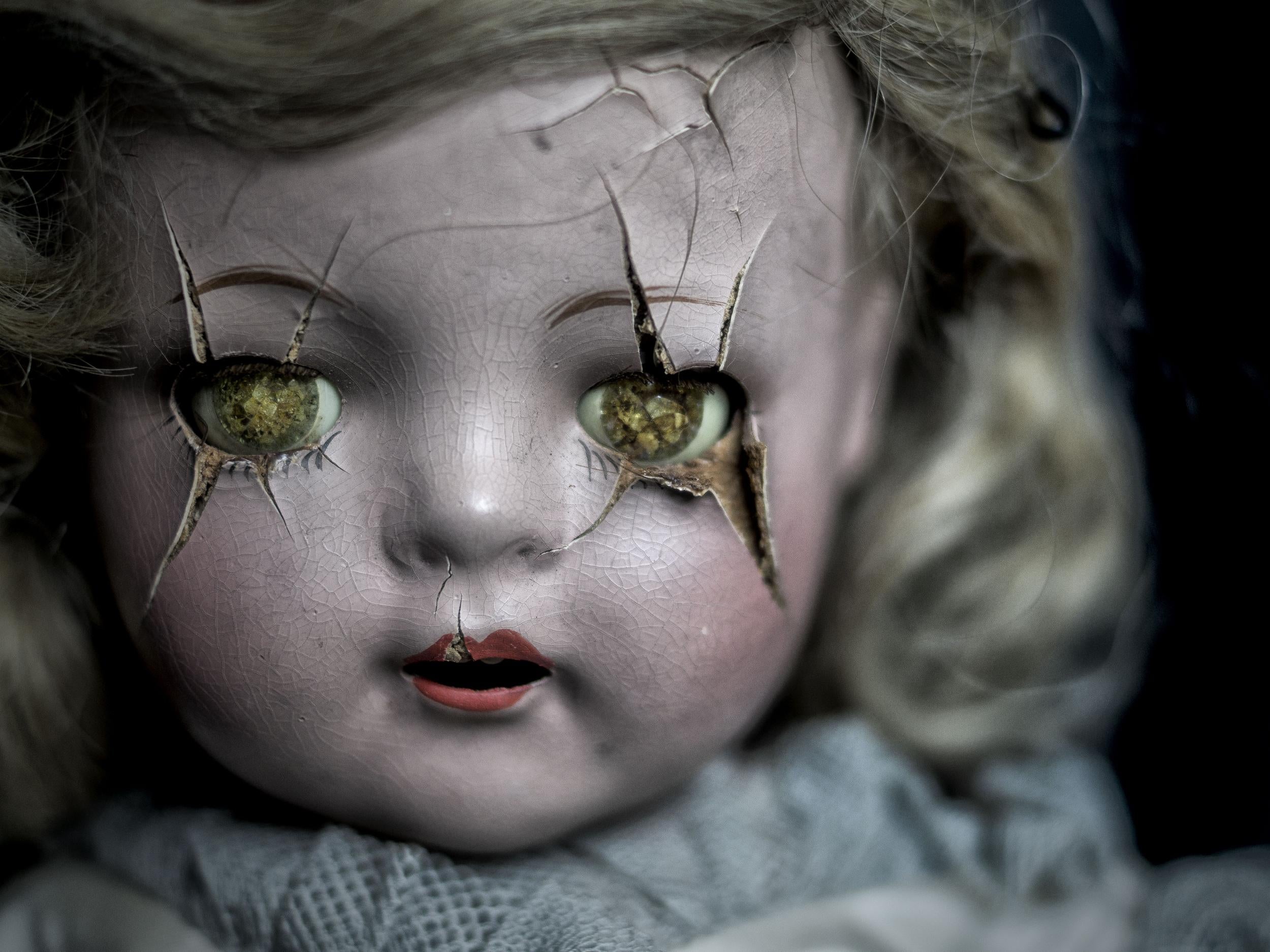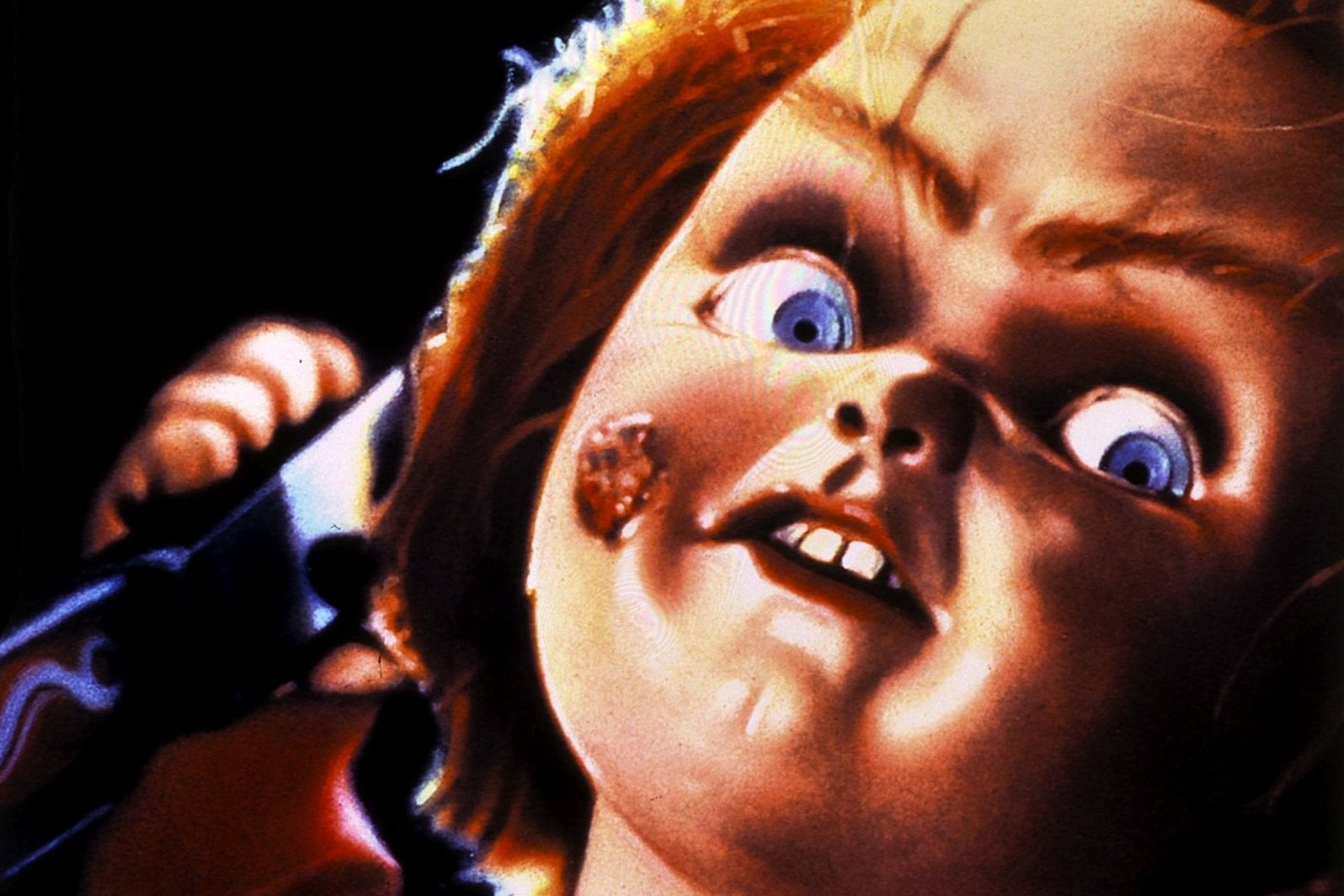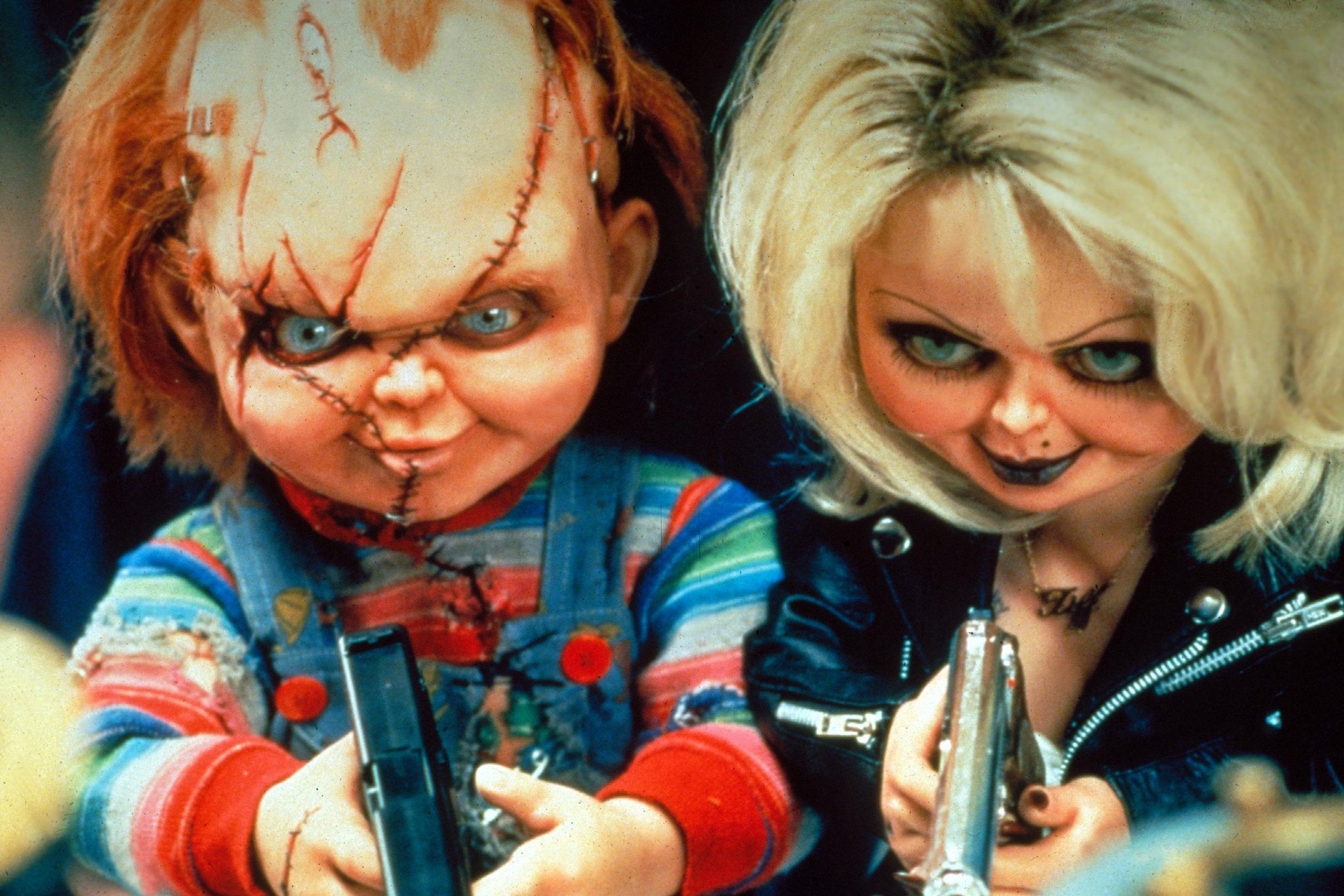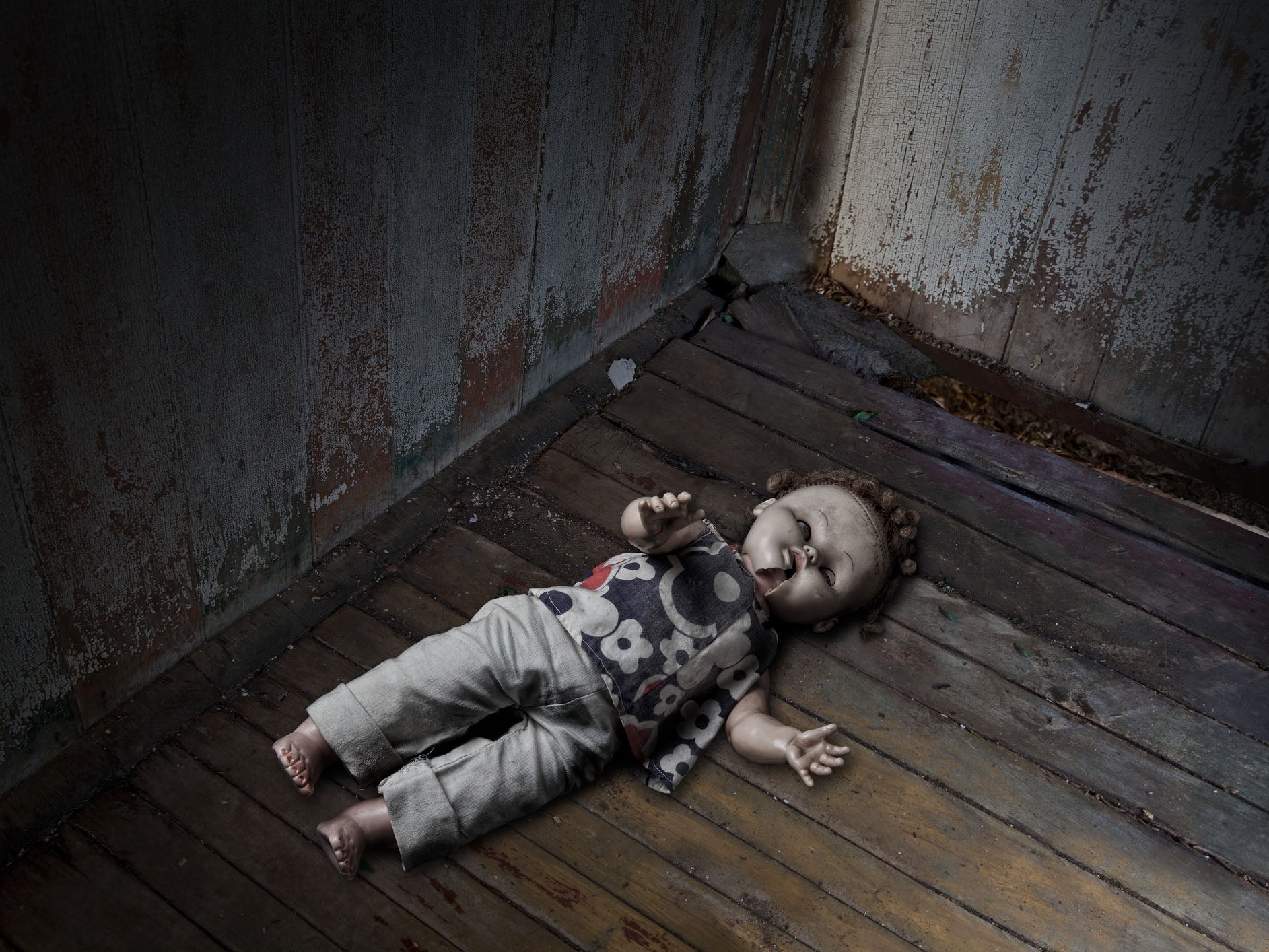Why do we find dolls so creepy?
The murderous plastic playmate Chucky is back in a new movie, but what is it about these particular children’s toys that sparks a fearful reaction? David Barnett opens the cellar door that leads to our ‘uncanny valley’


The chances are that you have, at one time or another, shared a house with at least one doll. Perhaps you owned a baby doll as a child, maybe you display them in adulthood, or have a friend or aunt who does. If you’ve got young children, you probably trip over one on a regular basis. You might be able to see a doll from where you’re sitting right at this minute.
Which is surprising, really, considering the received wisdom we get from horror movies and books is that dolls are generally given to coming alive with psychopathic, murderous intent.
This summer sees the return of Chucky to the cinema screens in a reboot of the 1988 horror movie Child’s Play. The new film is pretty much a retread of the old one, in which little boy Andy gets a coveted talking Buddi doll named Chucky from his mother. But this toy-of-the-moment has a little added extra; the spirit of an evil crook (voiced this time round by Star Wars’ Mark Hamill) which has been transferred into the doll, resulting in slasherific mayhem and carnage.
Whether it was meant to be intentionally played for laughs, the original Child’s Play is, on rewatching, more groan-worthy and darkly funny than outright scary, and it remains to be seen whether the remake keeps Chucky as a wise-cracking mini-murderer or presents it as something more chilling.
It’s unsurprising that Child’s Play is getting a fresh outing, given the recent success of the Annabelle movies, themselves a spin-off of the Conjuring franchise, loosely based on the supposed real-life exploits of paranormal investigators Ed and Lorraine Warren.
The 2014 film revolves around a possessed porcelain doll terrorising a family in 1960s California, and spawned a prequel, 2017’s Annabelle: Creation, and a third movie, to be released this June, Annabelle Comes Home.
Demonic dolls have littered the horror scene for decades, perhaps one of the first and most effective instances being the 1945 portmanteau movie Dead of Night, made by the Ealing Studios. Comprised of five interlinked short stories, it’s most infamous for the nightmarish final segment, in which a troubled ventriloquist played by Michael Redgrave is horribly taunted and hounded by his dummy, Hugo.
A particular favourite of novelist Sarah Pinborough is the 1978 movie Magic, starring Anthony Hopkins, Ann-Margaret and Burgess Meredith. It features a nasty ventriloquist dummy as well, Fats, who puts his supposed-owner Hopkins through the ringer, and leads him to commit dreadful crimes.

Rather than out-and-out supernatural, Magic is more of a psychological study, the ambiguity about the washed-up magician’s sanity in line with Pinborough’s own brand of twisty thrillers such as Behind Her Eyes and Cross Her Heart.
“It’s an old one but a goodie,” she says. “More a study of madness, really, but creepy as hell.”
Pinborough wrote horror novels before her current stardom in the field of domestic noir, though, and has a cautious appreciation of the doll as scary thing.
“Dolls always make me think of dead children,” she says, and you can almost see her shudder. “Cheery I know! Kind of one breath away from life. And ghosts of children are without doubt the scariest horror movie trope.”
There’s also a weird, twisted inversion of the Toy Story animated movies about dolls, she says. In the much-loved Pixar classics, puppets like cowboy Woody are sad because their owner doesn’t want to play with them any more. But what if toys didn’t get mad, but got even?
Sarah says: “If dolls were to have emotions I can only see bitterness for all the children who grew up, stopped playing with them and abandoned them. I think we also have a weird guilt about the toys we’ve forgotten.”
Did she have dolls when she was a child? “A Tiny Tears,” she says. “One of my sister’s Barbies that I stole. And a Girl’s World.”
Now that is a scary idea the horror movie world hasn’t explored yet… the almost-life-sized plastic disembodied head designed for applying make-up and experimenting with hair styles. On the other hand, perhaps a haunted Girl’s World would have to settle for a sharp tongue, not having the hands to grab a sharp knife…

But dolls are playthings for children, ventriloquist’s dummies are meant to entertain and make us laugh. So why are they so often sources of abject terror? Aside from the fact that any supposedly inanimate object suddenly standing up and grabbing a kitchen knife is going to be obviously terrifying, there’s also the consideration of the “uncanny valley”.
This is a term coined in the 1970s, riffing off Sigmund Freud’s theories half a century earlier, which suggests that the more human-like an inanimate thing is, the more unsettling it is. That’s because it never really looks completely human, no matter how good the craftwork that’s gone into it. Even a thing that looks 99 per cent human isn’t, and that disconnect our brain has between something that looks human but is so obviously not is a valley, an uncanny valley, that we just can’t bridge.
Dr Steph Lay, of the Open University, has recently completed a PhD that explores the whole idea of the uncanny valley. Why do we, as children, find dolls just ordinary playthings, but see them as creepy and disturbing as adults?
“There’s growing evidence that there is a developmental aspect to the uncanny response, and some of that is probably linked to the way that our perceptions of people, and particularly faces, develop as we mature,” says Steph. “My research looked at how artificial combinations of emotional expressions in faces could trigger a sense of eeriness, and found that the biggest trigger of eeriness came when a face presented with a happy, smiling mouth and angry or frightened eyes.”
Like, for example, a doll, or a puppet, and maybe the tears of a clown. Steph says: “The theory behind this is that it cues us into a state where the person we’re looking at is suppressing their real emotions but they are ‘leaking’ out despite that.”
In her research, Steph used actors to express different types of emotions, and created faces from blending the pictures so that, for example, the smile was at odds with the look in the subject’s eyes.
She says, “In the real world this type of combination can be seen in people who are trying to mask what they actually feel, and that causes us an immediate sense of alarm or danger. This was quite a surprising finding, as all of the literature at the time suggested that expressive faces that had non-expressive eyes – so, realistic computer game avatars that were not able to fully carry that emotional expression into their eyes, for example – would be the eeriest. It turned out that it was the mismatch in expression in different parts of the face that was the biggest driver of eeriness.
There’s growing evidence that there is a developmental aspect to the uncanny response, and some of that is probably linked to the way that our perceptions of people, and particularly faces, develop as we mature
“This would manifest more in adults than children as the social aspect of learning to trust people is a late-stage development: the eeriness of someone looking to potentially do you harm is quite a subtle cue to pick up on.”
Like Sarah Pinborough, Steph had the odd Barbie and Sindy doll growing up, but we don’t seem to find those as unsettling… they’re very obviously toys, not trying to ape a real person like a baby doll is, or imbued with movement and speech like a puppet or ventriloquist’s dummy.
“I wouldn’t say dolls like Barbies were particularly creepy in the uncanny valley sense as they were so unrealistic as representations of human that they stayed very firmly on the artificial side of the valley,” says Steph. “The dolls that I think most trigger a UV reaction are the real baby dolls, which are made to look almost completely lifelike apart from their stillness – and some people do animate them to counteract that. I appreciate they’re filling a different niche to children’s play-dolls, but they can be extremely unsettling.”
Given that Steph researched dolls and the uncanny valley for her PhD, you might think she’d be immune to them. But does she find them creepy?
“Definitely!” she says. “When I started studying the uncanny valley, someone gifted me a Little Apple Doll, with the white face and black eyes, who sat over my desk while I was working and always served as a source of eerie inspiration.
“I’ve always been fascinated by things that are creepy rather than outright terrifying, so being able to carry our research in this area was a real delight. When I started out, there was very little psychological research into what it was about almost-human entities that gave people that sense of uncanny discomfort, and I was intrigued to fill that knowledge gap to explain the phenomenon a little more.”

For Sarah, puppets have the creepy edge over dolls. “A friend of mine bought me two really old-fashioned puppets for a birthday gift – I mean, WHY – and they never came out of the boxes. I put them in the wardrobe, and then had to put them in the kitchen and eventually put them in a charity shop because they scared me too much. Dolls I don’t find so scary, although the old-fashioned ones made of china owned by old ladies are a different matter.”
That said, what if she went to stay at a friend’s house and they had a load of dolls in the guest bedroom? “I’d call a taxi and go and check into a hotel,” she laughs.
Between Dead of Night in 1945 and the new Child’s Play and Annabelle movies, dolls and puppets have featured in a host of stories, especially during the heady video nasty years of the 1980s. You probably don’t remember 1984’s Black Devil Doll From Hell, Dolls (1987) or – to prove that nothing in the nursery is safe – 1981’s The Pit, featuring a living teddy bear even more crass than the critter in the Mark Wahlberg comedy Ted.
And the original Poltergeist movie in 1982 managed to wrap up several common phobias in one delicious package when a stuffed clown tie came to horrific life and tried to strangle the life out of one of the eight-year-old Robbie from the desperately unlucky Freeling family.
Animated toys have also been a feature of horror fiction in one form or another. British author Ramsey Campbell’s unsettling The Doll Who Ate His Mother, for example, and Adam Nevill’s House of Small Shadows. Neil Gaiman’s Coraline, which was made into an animated movie, cast a different spin on the idea, with the threat of buttons being sewn on to living children’s eyes, turning them into a whole different type of living doll.
“Laura Purcell’s Silent Companions is probably the most effective one that I’ve read,” says Steph. “The avatars in her story have a real sense of menace and malice, and her descriptive language makes them come to eerie life in a beautiful way.”
Chucky and Annabelle will be ramping up the creep factor for cinema audiences this summer, and giving us pause to think that what we once considered so innocent and joyful when we were children actually sends a shiver down our spines as grown-ups.
And once you start considering the general creepiness of things like that, it’s hard to know where to stop. Disney has had some great success recently with live-action versions of its cherished classic cartoons, such as The Jungle Book and Dumbo. But take a moment to think what would happen if they gave the same treatment to another of its beloved characters, Pinocchio.
Can you imagine anything worse than a wooden puppet shrugging off its strings and staggering towards you, chanting over and over again, “I’m a real boy! I’m a real boy! I’m a real boy…”
‘Child’s Play’ and ‘Annabelle Comes Home’ will be on general release in cinemas on 21 June and 12 July respectively
Join our commenting forum
Join thought-provoking conversations, follow other Independent readers and see their replies
Comments